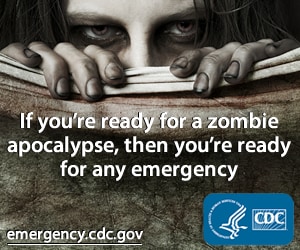A commentary by Dr. Gary Christenson on the Minnesota Medicine website offers the most complete listing of the benefits of arts in medicine I have yet seen. Whether the piece inspires you to partner with medical services or not, it provides evidence of the benefits of the arts to use alongside illustrations of the intrinsic, economic and educational values.
The commentary starts out relating an anecdote about an actual emergency “stat” call for musicians in a hospital. While acknowledging that such an incident is a rare occurrence in medicine, Dr. Christenson shows that the arts are already playing an important role in the practice of medicine:
(my apologies for the length of the citation. While I did pare it down to a large degree, there were just so many exciting and compelling examples, it was difficult to decide what to excise.)
“Although some might be inclined to dismiss the arts as a triviality, luxury, or unjustified expense in a time of concern over rising health care costs, research is showing that use of the arts in health care can be cost-effective. For example, a recent study done at Tallahassee Memorial HealthCare demonstrated that using music therapy when preparing children for CT scans significantly reduced use of sedative medications, associated overnight stays, and nurse time, and resulted in a cost savings of $567 per procedure. It also decreased the need for repeat CTs because of poor-quality scans. When extrapolating those numbers to all pediatric CT scans done in the United States, researchers estimated a potential savings of $2.25 billion per year.”
1. Studying the arts makes medical students into better doctors.
“In our state, storytelling and theater have been used to teach students how to effectively take a medical history. Last year, for example, Mayo Medical School and the Mayo Clinic Center for Humanities and Medicine partnered with the Guthrie Theater to offer the one-week selective “Telling the Patient’s Story,” which drew upon improvisation and storytelling to teach students to take and report patients’ medical history.”
“Harvard Medical School has found that training medical students in the visual arts can help them develop their clinical observational skills. Students who participated in formal training consisting of art observation exercises, didactics that integrate fine arts concepts with physical diagnosis topics, and a life-drawing session demonstrated better visual diagnostic skills when viewing photographs of dermatological lesions than students who only received conventional training.”
“The arts also can convey lessons in ways traditional lectures cannot. It isn’t surprising that the top-rated lecture by first-year medical students on the University of Minnesota’s Twin Cities campus for seven consecutive years was a reading of physician and playwright David Feldshuh’s Miss Evers Boys by Guthrie Theater actors. The play, about the Tuskegee syphilis experiments, illustrates ethical issues related to informed consent and human experimentation.”
2. The arts have therapeutic benefits.
“Museums such as the Museum of Modern Art in New York and the Minneapolis Institute of Arts have programs for patients with Alzheimer’s disease and memory loss that use visual and cognitive stimuli to evoke memories. Dance has been shown to improve the mobility of patients with conditions such as fibromyalgia and Parkinson disease.”
“Storytelling has been noted to improve the quality of life for cancer patients,10 increase lung function associated with asthma, and reduce symptoms and doctor visits. One report noted that regularly playing the Australia didgeridoo decreased apneic episodes for patients with obstructive sleep apnea.”
3. The arts can help prevent disease.
“..a campaign to decrease heart disease in England found that people were much more responsive to the message, “Dance makes the heart grow stronger” than to “Exercise makes the heart grow stronger.” Dance is one of the best ways to improve health on a number of levels. In addition to its physical benefits, dance enhances social engagement, which is important to overall health and well-being, and it’s one of the best activities for delaying the cognitive decline associated with Alzheimer’s disease.”
4. The arts can improve the patient experience.“…a body of research has shown that patients tend to be less stressed, less anxious, require less pain medication, and ready for discharge earlier when their environment includes views of the natural world.”
“Bedside visits by musicians and artists also distract children from pain and help them explore their feelings about their illness.”
5. The arts can promote physician well-being.
“…Although many physicians were involved in the arts before entering medical school, they put those activities on hold during their training. University of Minnesota medical students have an opportunity to keep those interests alive… The program…provides students with a small financial award to pursue and develop their interests and skills in such diverse areas as painting, drawing, singing, clowning, photography, and playing an instrument as a way to find relief from the rigors of medical study.”
Using the arts to reduce costs, provide relief and focus to patients and produce more effective doctors, what isn’t to love? As with all things, arts are only one part of bolstering well-being and providing better medical care. There is certainly a potential for it to become a much more important element in providing better medical care if employed and studied to a greater degree.
Dr. Christenson provides 20 footnoted references for his commentary which seems a good place to start for those looking to develop programs and partnerships to integrate the arts in medicine. The research is also obviously a good basis for advocacy about the value of the arts.
